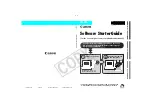
42
Parameters /
DX200 Editor Main Window
• Keyboard Level Scaling Curve Left (L), Curve Right (R)
Settings:
-LIN (Linear, negative)
-EXP (Exponential, negative)
EXP (Exponential, positive)
LIN (Linear, positive)
These parameters determine the left and right Keyboard Scaling Curves for each of the
operators. Curve Left corresponds to the keys on the keyboard lower than the Break
Point, and Curve Right corresponds to the keys higher than the Break Point. Any one of
the Left Curves can be used with any one of the Right Curves, giving you sixteen differ-
ent curve variations to choose from.
Negative curves decrease the operator level as you play notes further away from the
Break Point, and positive curves increase the level.
Exponential curves feature a more gradual change in level near the Break Point, and
change the level more drastically the further you play away from the Break Point. Linear
curves provide a "straight line," proportional relationship between the note played and the
resulting operator level.
• Keyboard Level Scaling Depth Left (L), Depth Right (R)
Range: 0 ... 99
These parameters determine the depth of the selected left or right curve. At a minimum
setting ("0"), there is no scaling, and you can increase (or decrease, for negative curves)
the level up to maximum of "99."
• For values near the maximum, there has to be some "headroom" --- in other words, some
operator output level must be available for increasing. For example, if the
is set to "90," and a positive (+) curve is set, the greatest curve depth that can be
achieved is "9" (the difference between the maximum Output Level and the actual set value).
In this example, while the curve Depth can be set to a value greater than 9, there will be no
more effect than if it were set at 9; if you want more boost as you move up or down the key-
board, then you'll have to set the operator Output Level at a lower value so that more "head-
room" is available for the scaling to boost the level to the maximum of 99.
















































